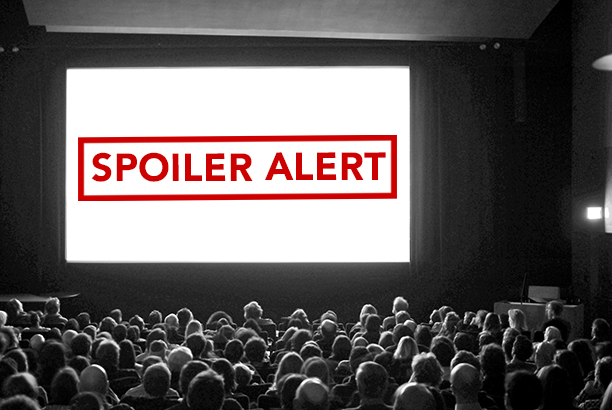
Ever notice how many of your colleagues write emails like they’re telling a story, saving the ending for last? That works well in books or movies, but not in business. We want to be surprised by a movie’s ending, but we really need business emails to start with a “spoiler”. Remember M. Night Shyamalan’s “The Sixth Sense” (“I see dead people”)? I guessed the surprise ending in the first few minutes and it ruined the experience. But when I read an email from a colleague, I want to know how it ends, right up front.
Leaders are bombarded all day long with emails, reports, meetings, briefings, and presentations, and we struggle to keep up. A friend of mine, Joe McCormack points out in his book “BRIEF”, we struggle with information overload and emails are one of the worst culprits. Busy leaders don’t have time to read and re-read emails, trying to guess why it was sent or what we need to do with the information. In my 30 years with the military, working with very busy senior leaders, I’ve learned one of the best ways to bring focus, clarity, and brevity to my emails was to draft them with a spoiler alert in the first line – the “Bottom Line Up Front” (BLUF).
START YOUR EMAIL WITH THE BOTTOM LINE
Starting emails with the BLUF simply means moving the conclusion—the bottom line—to the first sentence of your email. It’s essentially what McCormack calls the “headline” in his book Brief. You clearly and succinctly summarize the purpose of the email and what actions you need the reader to take. In other words, you spoil the ending.
For example, if I was writing to my boss, General Rock, to get approval on a new ethics policy, my email would start like this:
“Sir, BLUF: I’m writing to get your approval on a new ethics policy for the command.”
My boss doesn’t know the background yet—why we need a new ethics policy, or what the new policy says—but he now knows why he is reading the email and what action I need him to take.
(Side note: It’s not always necessary, but I almost always included the word “BLUF” in the headline for military leaders, who understand the lingo.)
BLUF HELPS YOU ACCOMPLISH THREE THINGS
1. Keeps your writing focused. I see it every day. People draft business emails like they might tell a story, starting with the beginning and leaving the conclusion for the the end. As with any story, it becomes all too easy to ramble, add unnecessary details, or get off track. By forcing yourself to draft a short BLUF at the very beginning, you focus the email on what needs to be accomplished. The rest of the email is more likely to be concise and clear.
2. Saves your reader time. The BLUF primes the reader to receive the message you intended. They won’t have to re-read the email or guess why you sent it. In the example above, I’m saving my boss thinking time by helping him focus on the key information he needs to make that decision.
3. Compels the recipient to take action. A good BLUF always includes precisely what action you expect from the recipient. That might simply be to take note of the information (an “FYI” email), or it might be to make a decision. Either way, the recipient won’t have to search the email to determine a response. So you’re more likely to get the outcome you want.
BOTTOM LINE FOR BUSY LEADERS
Bottom line, busy leaders are already overwhelmed with information, so use BLUF to make their lives easier. Plus, as your teammates get used to your new brand of clear writing, they’ll be more likely to respond to your emails in the future. And if you want to learn more lean communication techniques like this one, check out the book “BRIEF”. It’s a go-to resource for military and business leaders. You can download two free chapters here.
About the author: Brigadier General (ret.) Rich Gross is a strategic advisor to the Brief Lab and the Sheffield Company. He spent over 30 years in the military, serving as the senior legal advisor to multiple senior leaders, to include the Chairman of the Joint Chiefs of Staff. While serving in the military, he gained a reputation for clear and concise communications. Follow Rich on Twitter at @RichGross85.